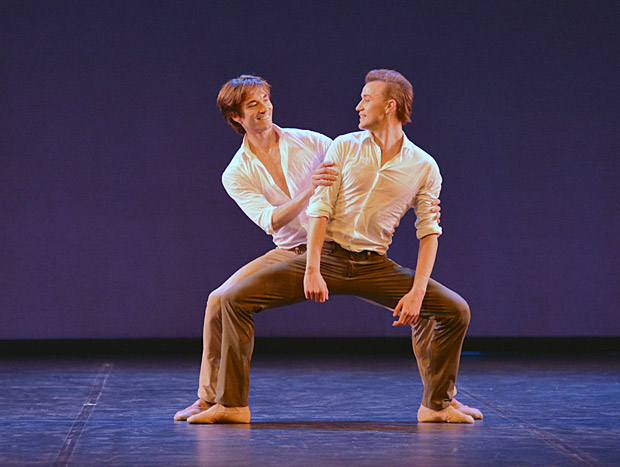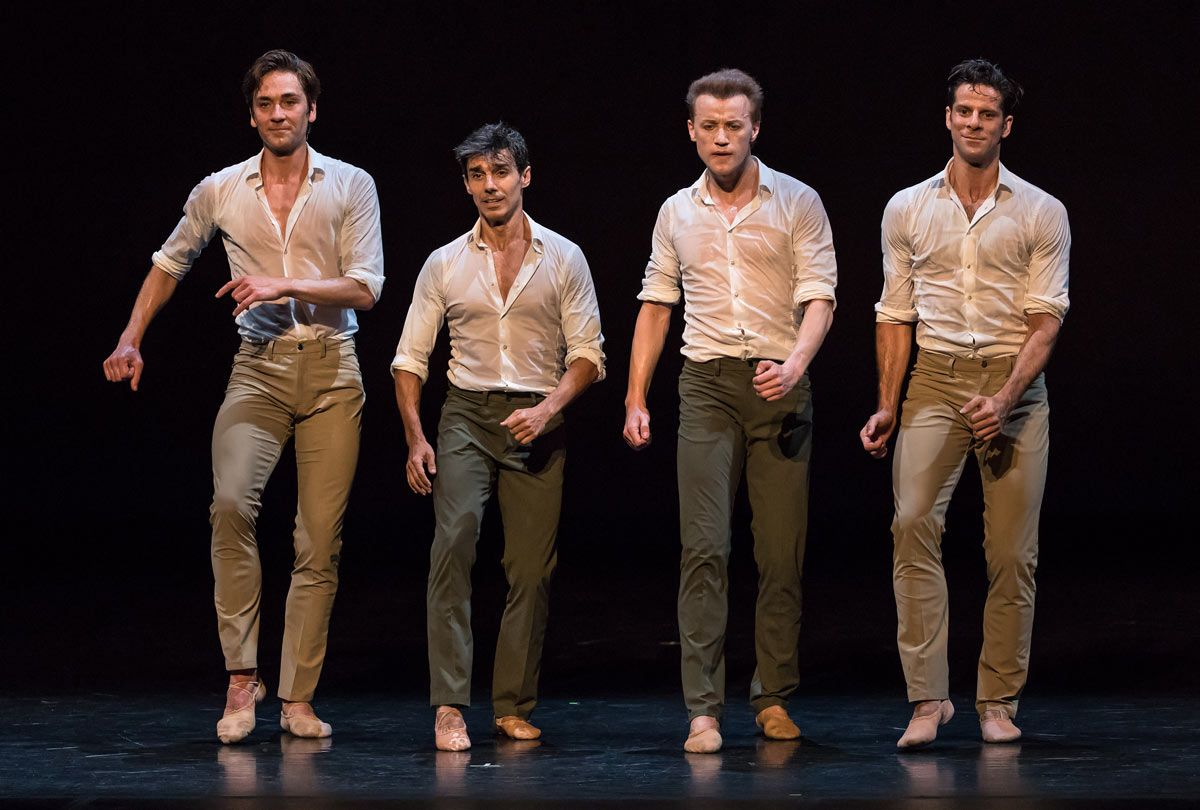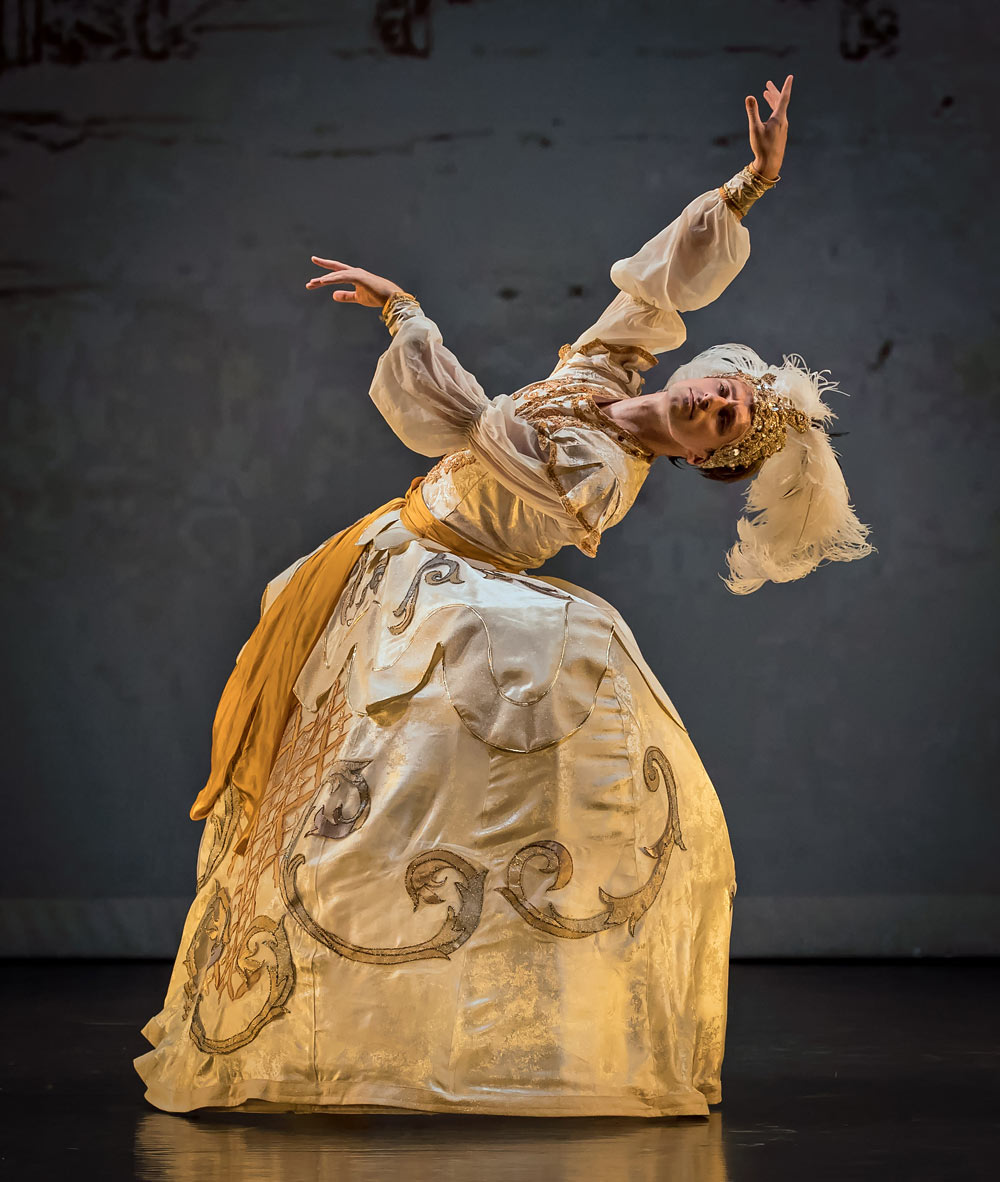
© Dave Morgan. (Click image for larger version)
Ardani 25 Dance Gala
Clay, Tristesse, Le Divertissement du Roi
★★✰✰✰
New York, City Center
19 August 2016
www.ardani.com
www.nycitycenter.org
Danilian and Co.
It’s good to be able to throw yourself a party, and that’s what Sergei and Gaiane Danilian did this week, at City Center. All to celebrate a quarter century in the business of producing dance. Even with the last-minute cancellation of its headliner, Diana Vishneva – who was injured – the lineup was impressive: eleven dancers from the Mariinsky, plus a smattering of principals from other world-class companies. Those included Marcelo Gomes (from ABT), Joaquin de Luz (NYCB), Friedemann Vogel (of Stuttgart), and Denis Matvienko (also of the Mariinsky), all veterans of the Danilians’ “Kings of the Dance” franchise.
The Danilians run Ardani Artists, a ballet production company based in New York. (They are also responsible for bringing Boris Eifman’s company to the US.) Their stock-in-trade is the pairing up of stars like Vishneva, Natalia Osipova, and the various generations of “kings” with choreographers like Mauro Bigonzetti and Arhtur Pita. These shows, with names like “Diana Vishneva: Beauty in Motion” and “Natalia Osipova, Dancer,” tour the world, presumably making lots of money. They tend to attract ballet audiences hungry to see their favorite stars in evenings whose main purpose is to exalt their dramatic range, show off their extreme flexibility, and bank on their star power. Not a lot of what they produce is high art, but it certainly fills a niche.

© Michael Khoury. (Click image for larger version)
Sergei Danilian, who, in a recent interview with Gia Kourlas of the New York Times said that his life’s inspiration was Serge Diaghilev, has also encouraged the creative efforts of several of his his charges, most notably Marcelo Gomes. Gomes has created several pieces for “Kings of the Dance,” one of which, Tristesse, set to Chopin études, was the centerpiece of the City Center gala. (The Chopin pieces were beautifully played onstage by the young pianist Dimitri Dover, the only live music of the evening.)
An all-male chamber ballet that combines aspects of Dances at a Gathering, Other Dances, and In the Night, Tristesse explores the shifting dynamic between four men (Gomes, De Luz, Vogel, and Matvienko). The mood is initially playful and friendly, then competitive, lyrically romantic, aggressive, and in the end, surprisingly grim, as three of the men shrug off Gomes’s pleading gestures, leaving him alone onstage. So much for male camaraderie. The idiom is classical, with a few “Slavic” flourishes, à la Other Dances, some jazzy steps and quite a bit of humor. It certainly doesn’t break new ground in the genre of the Chopin ballet, but it’s a nice piece, with some poignant moments, particularly in the pas de deux for Vogel and Matvienko, suggesting a deeper relationship, perhaps love, between the two men. (Vogel, seldom seen here, turns out to be a beautiful, lyrical, light, clean dancer.)

© Michael Khoury. (Click image for larger version)
The other two works on the program were by very young Russian choreographers whom Danilian is promoting after spotting them at the Mariinsky’s new Creative Workshop for young Choreographers. Vladimir Varnava’s Clay shows far less promise. It is an incoherent ensemble piece for six that begins as a kind of group movement study and then devolves into a not-very funny vaudevillian caper involving lots of forced smiles, butt-shaking, and grotesque poses. Bring on the clichés, too: hands pulling faces, anguished squats in a wide second position, flesh-colored corsets, women being pulled across the floor by the leg.
But the closing piece, Le Divertissement du Roi, by the 24-year-old Maxim Petrov, is just weird enough to be interesting. Taking its cue from the allegorical ballets performed in the court of Louis XIV, it is made up of five sections, each with a theme, all set to dance music by Jean-Philippe Rameau. The first is a scene with the King and Apollo; the next depicts a group of “paysans gallants” vying for the attentions of a shepherdess; another sets in motion a battle between the Zephyr and Boreas winds. A be-wigged courtier (Soslan Kulaev) superciliously introduces each, in courtly French. The backdrops are period stage designs, very attractive.

© Michael Khoury. (Click image for larger version)
The dancers, all men, are lavishly costumed, their get-ups inspired by 17th century attire, including, at the beginning, short hoop skirts over their knee-length breeches. The movement, too, suggests 17th century conventions, with low arms, fast and clean (and sometimes flexed) footwork, elegant demeanors, and elaborate movements of the arms and wrists. It’s certainly not stylistically pure. The whole concoction is extremely artificial, to say the least, and completely zany. The audience didn’t quite know what to make of it – was it supposed to be a funny, or serious? Perhaps if Vishneva had been there to perform the role of the king (as she was billed to do, in her first pants role) they would have liked it better. But, questions of tone aside, Le Divertissement du Roi reveals a young choreographer who is, at the very least, going his own way, avoiding the clichés of contemporary ballet (sexiness, semi-nudity, sky-high extensions).
So bravo for Danilian. All the dancing at the gala was very fine – who could expect any less from these dancers? One can (and should) question his taste but it’s clear that he’s willing to go out on a limb, that he believes in his artists, and that, as Gomes said in the over-long celebratory film at the start of the evening, that he has created a kind of artistic family around him. “We love you,” said another dancer – and he meant it.

















As usual Marina Harss places a performance and careers in intelligent context.
One relaxes when seeing her by-line.
A bit of information, Fredemann Vogel competed in a USA IBC competition in
Jackson, perhaps in 2004 or 2008 in trhe junior category and earned a bronze
medal.